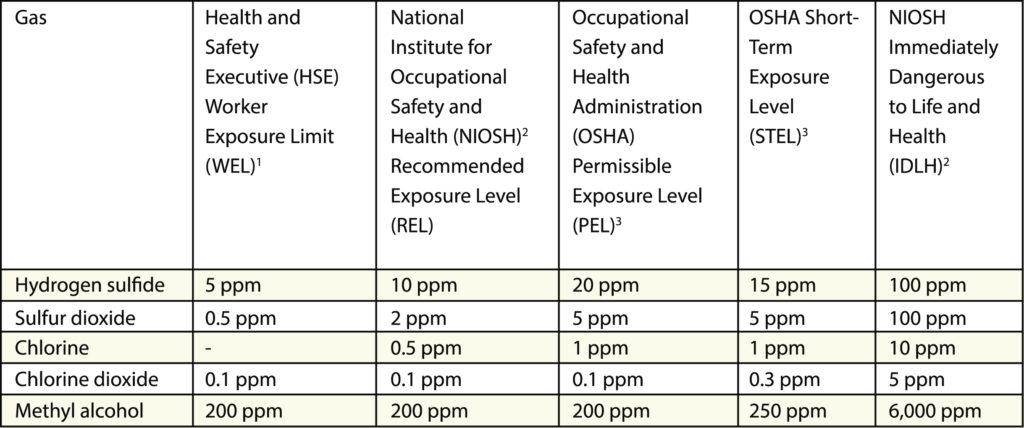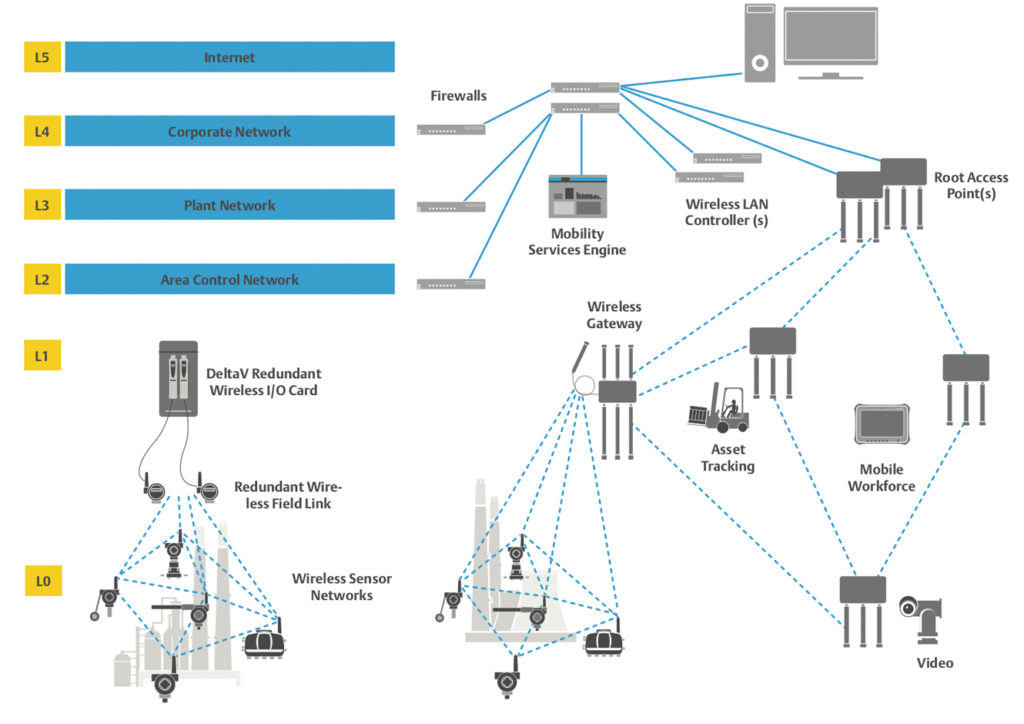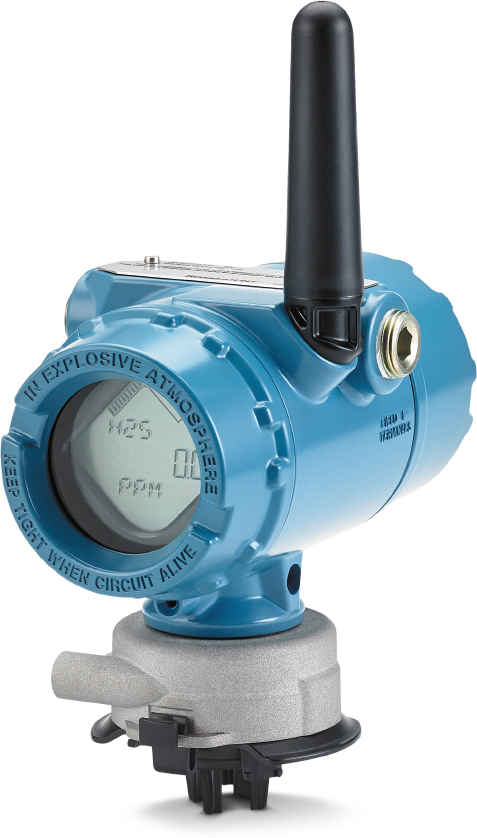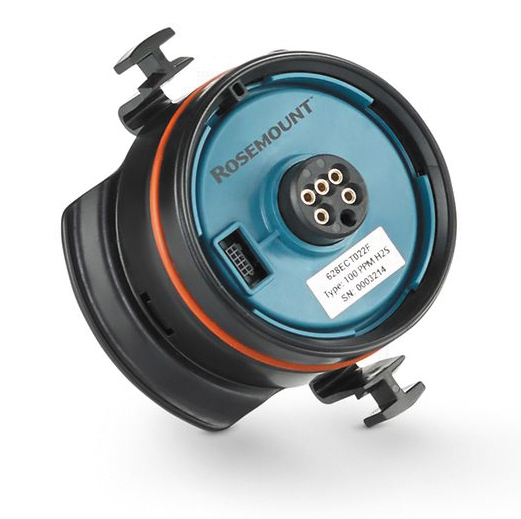JOSHUA HERNANDEZ
There is a long-standing idea that the greatest threats to people are the hazards they deal with on a routine basis. Interaction becomes automatic, causing an individual to forget the nature of the hazard, and carelessness results, eventually leading to an accident.
Personnel safety in a potentially dangerous plant environment depends on effective training, personal vigilance, and situational awareness combined with appropriate safety equipment and strategies. This concept is easy to visualize in an oil refinery or large chemical plant because the hazards associated with toxic or flammable products in vast amounts can lead to catastrophic incidents. One might think that paper mills are inherently safer environments, but even the most vigilant workers can be caught unaware, falling victim to an equipment failure, process upset, or another unforeseen situation.
TOXIC GAS HAZARDS IN
PULP & PAPER MILLS
Breaking down wood to produce pulp is not a simple process. Lignin can only be dissolved by a combination of high temperatures, high pressures, and aggressive chemicals. Whether using a sulfite or kraft pulping processes, sulfur compounds are involved. Sulfur dioxide and hydrogen sulfide, among other toxic gases, are common effluents. Hydrogen sulfide is recognized as a very dangerous byproduct and has been the cause of numerous fatalities in the larger process industry sector.

As noted by the UK Health and Safety Executive (HSE), hydrogen sulfide is a broad-spectrum poison, with its most acute effect on nervous and respiratory systems. It is heavier than air and therefore tends to accumulate in low-lying areas like trenches and sumps. While hydrogen sulfide has a strong odor of rotten eggs and is easy for a human to recognize, it rapidly destroys the sense of smell. Low hydrogen sulfide concentrations can be hard to detect, requiring correct implementation of detection equipment.
Hydrogen sulfide is not the only hazardous substance common to pulp and paper mills. Others are sulfur dioxide, chlorine, chlorine dioxide, and methyl alcohol (see Table 1). Because of the risk associated with acute exposure to these chemicals, anyone working in this environment must be aware of where dangers lurk and take appropriate precautions.
FIND IT BEFORE IT FINDS YOU
Although humans should be able to identify the presence of hydrogen sulfide by its odor (at least until their noses are desensitized), this is not a reliable means of protection. Hydrogen sulfide can accumulate in areas where workers may not go frequently and reach concentrations capable of causing very rapid effects, such as when opening a hatch on a storage tank or opening a valve.
There can also be situations where oxygen may be depleted, displaced by a different gas, or consumed by a burner. OSHA considers any area where the oxygen level falls below 19.5 percent to be “oxygen deficient” and not safe for workers.

Mills can place various toxic gas detectors and other types of sensors in strategic areas where there is a high probability of gas release or accumulation to protect against these and other hazards. Gas detectors are designed to look for specific target hazardous gases such as hydrogen sulfide or carbon monoxide, or for the level of a critical atmospheric component such as oxygen. They should be positioned in areas where there are likely sources of the specific hazard. For example, hydrogen sulfide detectors should be deployed around pulping areas and near recovery boilers where black liquor is burned, positioned with an awareness of the subject gas density and any tendency to accumulate in low areas.
The specificity of gas detectors calls for a detector for each type of gas. If there is potential for both chlorine and hydrogen sulfide in a given area, each will require its own detector. If these are conventional units, they will need to be mounted permanently and connected back to a control room. A local alarm might also be installed and activated by the detector.

The cost of adding multiple gas detectors in potentially remote areas of a plant is significant. This can cause plants to skimp on deployment, leaving areas of a facility unprotected or sensitive to only specific hazards.
BETTER SENSORS, EASIER TO USE
Fortunately, the capabilities and flexibility of WirelessHART instrumentation extends to gas detectors as well as conventional process instruments that may already be installed in pulping areas, near boilers, or on a paper machine. WirelessHART gas monitors can be added to an existing wireless network and located anywhere within the coverage area. Their data can be captured without the need to join them to a larger automation system running the process, although it is an option. Since such monitors are internally powered, they require no wires of any kind and can be relocated within the network coverage area as needed. With WirelessHART’s self-organizing capabilities, once a monitor is joined to the network, it can be moved around within normal coverage areas without needing to make any configuration changes.

Each monitor has a sensor module designed to detect a gas of interest. Like conventional sensors, they can only respond to one specific gas. Modular construction makes it possible to use one universal transmitter and install the appropriate sensor as needed. If a sensor requires calibration, a spare one can be calibrated in the maintenance shop and swapped in the field. If a hazard analysis suggests that it is critical to monitor for different gases, technicians can change monitors in the field—for example, by swapping the sensor module from one designed to detect oxygen depletion to one designed for hydrogen sulfide detection.
This strategy simplifies the deployment and maintenance of gas detectors. Costs can be further reduced if mills can use existing WirelessHART infrastructure. Even if a facility has no other wireless instrumentation, building a WirelessHART network from scratch is still less costly than adding wiring for even a small number of gas detectors.
The upside—protection for a plant, its people, and the surrounding community—has inestimable value. Nothing can fully substitute for the importance of vigilant and well-trained workers, but they deserve all the help a company can provide to ensure their well-being.
Joshua Hernandez is global product manager for Emerson’s Automation Solutions business and works primarily with Rosemount’s flame and gas products. He received a Bachelor of Science degree in chemical engineering from Iowa State University and his MBA from the University of Minnesota. Learn more about WirelessHART technology at www.emerson.com/en-us.
 Paper 360
Paper 360